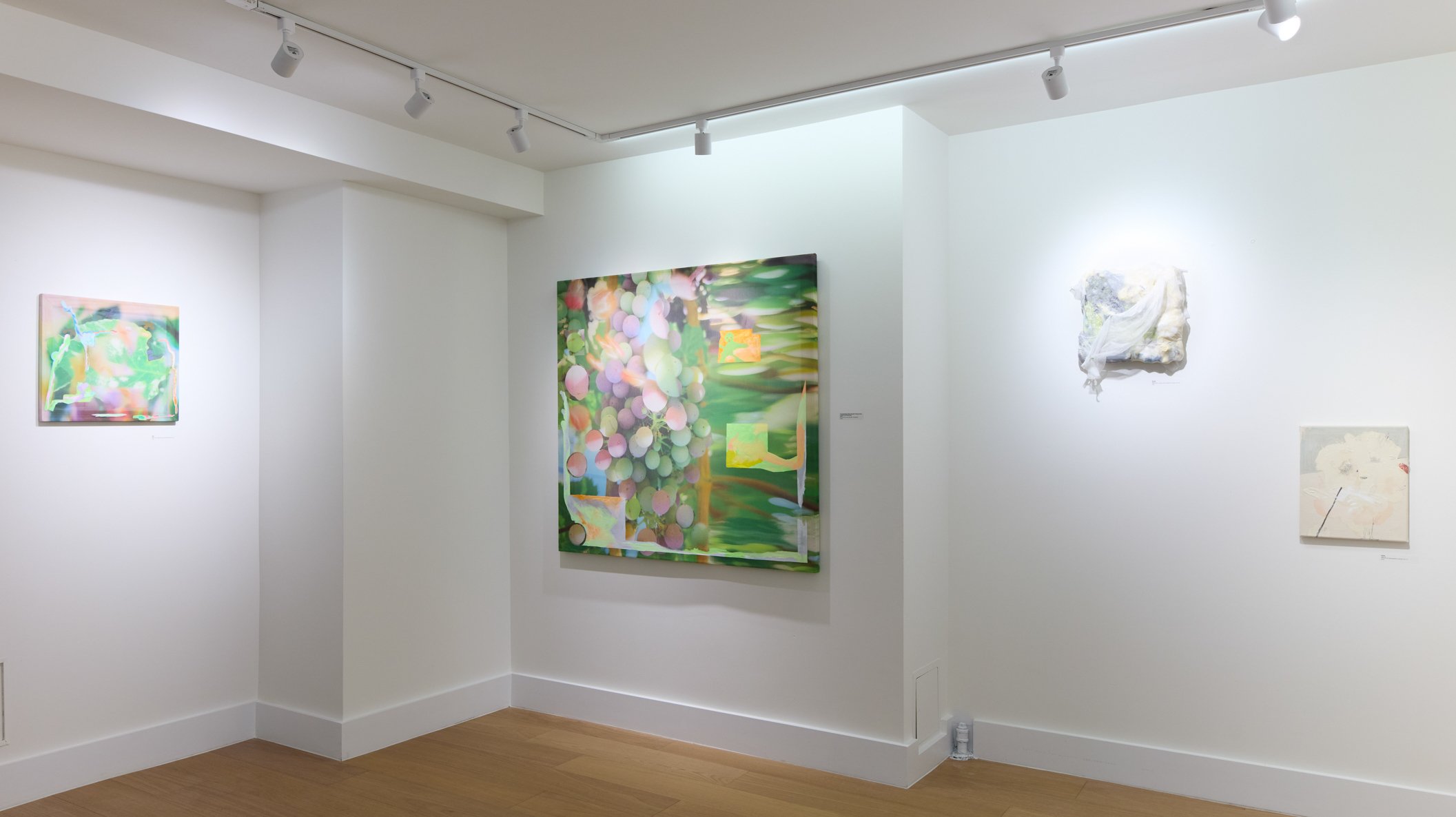“Binary Equilibrium” Luxuriates in Polarity
On July 30, the Korean Association of New York Artists (KANA) held its opening for the exhibition Binary Equilibrium at Gallery Chang. The group exhibition was curated by Calvin Lee and Lina Hwang, featuring the works of eight multidisciplinary Korean-born and Korean-American artists. The show, part of a two-part collaboration with Gallery Chang and KANA (with the second part being Unbound Playground), was inspired by a culmination of Western existentialism and Eastern takes on nihilism. Electric in its dynamic and dialectic curation, it adopts a playful approach to themes of life and death, sublimity and nothingness.
Binary Equilibrium, at its heart, is an exhibition about contradictions. According to the press release, “the interplay between humanity and the natural world” informs the show’s “synthesis or equilibrium between these opposing ideologies.” The space is divided into four sections: Sublime, Beauty, Tragic, and Comic. Tied to the history of philosophy, these sections are inspired by the writings of Sartre, Nietschze, and Nicolai Hartmann, as well as Eastern teachings of naturalism. Two disparate intellectual traditions conflict and potentially synthesize with each other — a “binary equilibrium,” if you will. Every section presented two artists’ works in pairs: Saejun Kim and Taejoong Kim, Calvin Lee and Dawn Kim, Paul Rho and Yuna Cho, and Jean Oh and Kai Oh. These works’ dialectical placements encouraged their viewer to stew in apparent contradictions, prompting them to reconcile the irreconcilable.
To do this, much of the art drew from a childlike place, harkening back to a time in life when a logical world was not necessary. The multimedia works all walk the tenuous line between Korean ideals of balance and a more Western philosophy-based postmodern pull toward hyperindividualism. From Paul Rho’s Photogami series, where each photograph was folded into origami and then unfolded, to the thickly textured oil paintings of Jean Oh that don stitches, cuts, and scratches, to the vibrant screen prints of Kai Oh, the show pulsed with enough whimsy as to not drown in the weight of its own hefty philosophical source points.
The collision of Eastern and Western philosophy and particularly how nihilism interacts with Eastern naturalism were important touchstones in the formulation of this show, according to curator Calvin Lee. These questions of culture manifest themselves in the show with juxtapositions of naturalism and industrial: angular plaster sculptures sit alongside soft, rounded lanterns shaped from prints of Korean oceanscapes. Muted and hushed explorations of vague traces of the human body are paired against ultra-vibrant scenes of vineyards, accented with a distinctly modern neon color scheme. Many of the artists utilized traditional Korean materials and practices, expanding them into something distinctly fresh and distinct.
The synthesis of the two ideals is stirring — perhaps there is nothing pristine and natural left in this industrial world, for even the soft, muted lushness has been touched by the brutal, the concrete, the hyper-developed. But then again, perhaps the natural can exist alongside the industrial and wrap its soft edges around hard lines, creating something distinctly of our time and beautiful in its own specific way.
Binary Equilibrium was on view at Gallery Chang from July 30 to August 7, 2024. Featured artists include: Tae Joong Kim, Sae Jun Kim, Jean Oh, Dawn Kim, Calvin Lee, Yuna Cho, Paul Rho, and Kai Oh.
Edited by Xuezhu Jenny Wang





